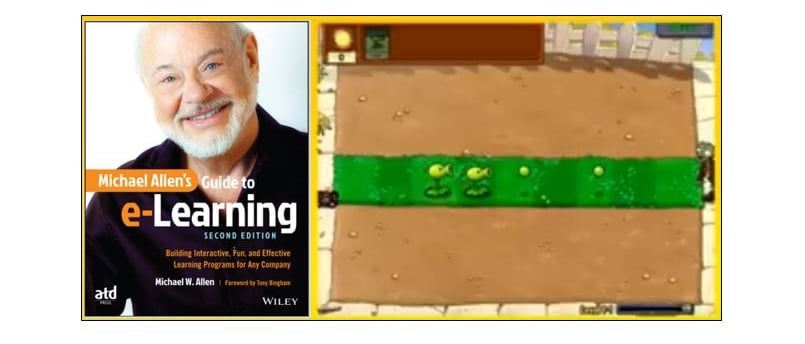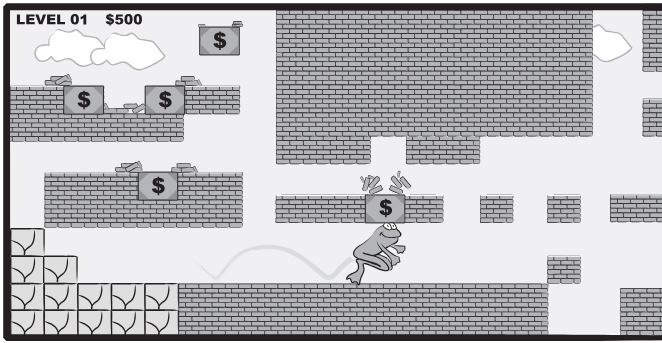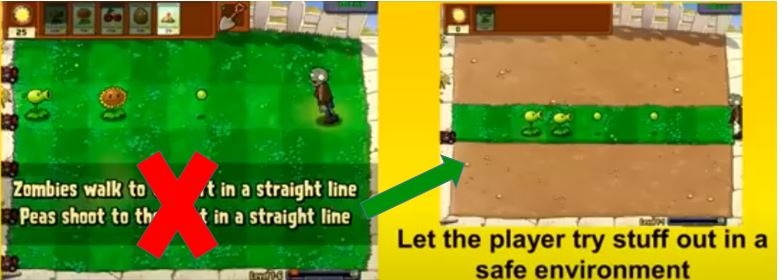CREATIVE LEARNING EXPERIENCES THAT CHANGE BEHAVIOR
Kill the Tutorial, not the Learner
Plants vs. Zombies knows for a "killer" tutorial.
5/26/20253 min read


Okay class. Listen up. Your homework is to count the thousands (and thousands) of bricks and circle the ones you kick. Once you’ve circled a brick, memorize where it is because that could show up on Friday’s test. Johnny, stop hitting Gerry. Gina, don’t pull Peggy’s pigtails. Class, you’ll need this some day. You’ll be so happy you know how to identify which bricks to kick. These conceal award points. Great success will come to those learners who work to find the correct bricks!
10 years later…
Hurray, I no longer have to make all those PowerPoints. Now there’s an online version. And it’s so thorough! 585 slides to keep those kids busy!
"To me, this sounds similar to a lot of corporate training," says eLearning expert Dr. Michael Allen. "Although we might not see our trainees pulling one another’s hair, making crude noises, and writing on desks, we can be sure they will be checking e-mail, catching up on social media, and even ordering holiday gifts online when learning tasks are so uninteresting."
Unlike what he observed when the home version of classic Super Mario Bros. became available. His son – and every kid in the neighborhood – played constantly. Skipped meals. Stayed up late. Mastered how to jump, duck and kick. Explored hundreds of screens. Scrutinized thousands of bricks. Willingly.


For prizes, right? Toys, maybe? Money? No, no, and no.
"We play these games as skillfully as possible to see how far we can get, to avoid dying and having to start over, to feel good about ourselves, and to enjoy the energy of a risky, but not harmful, situation… for the reward of being able to continue playing," explains Allen in his eponymous Guide to e-Learning: Building Interactive, Fun, and Effective Learning Programs for Any Company 2nd ed. (John Wiley & Sons, Inc.; 2016). He points out that just teaching one task within the complex behaviors of Super Mario Bros. would be daunting enough for an educator. And yet, millions of players get good at ‘em all – with little to no typical instruction.


"Tutorial? That game had a tutorial?"
Whenever he gets that question, Plants vs. Zombies designer, George Fan, considers it high praise. Instead of 6 six slides covered with instructions that players will just speed-click through to get to game play, Fan has players PLAY from the get-go. A super stripped down version, mind you – just one type of plant and one type of zombie. But wordy descriptions of the behavior of the enemy zombies and the trajectories of the peas are no-go. Instead, the player experiences for themselves that zombies walk in a straight line. Take damage. That peas are shot in a straight line. That it takes about 10 of them to kill a zombie.
"It’s better to have players do than read," advises FAn in his internet-famous GDC (Game Developer's Conference) talk How I Got My Mom to Play Through Plants vs. Zombies. "Blend the tutorial into the game so it doesn’t feel like a tutorial at all."
Along with having a participant do - rather than read - from the start, the other secret of engagement is the goal. As the player / learner enjoys some success, the reward keeps them trying, says Allen. And making sure they fail – but not too much. How? By making the goals keep getting a bit more challenging. Then you fail. Try again. Dominate that situation that kicked you to the curb prior. Get that rush of “yeah! I’m a badass!” Go after harder goal. Fail. Try again. Get adrenaline hit….This keeps them practicing. Practice is the key to mastering a skill - visible progress makes you keep practicing, while goals that keep getting harder draw attention away from repetition and onto the results.
The tl;dr: "Why," wonders Dr. Allen, "aren’t these obviously effective instructional techniques applied to e-learning, with all its interactive multimedia capabilities?"
Isn't that a good question?